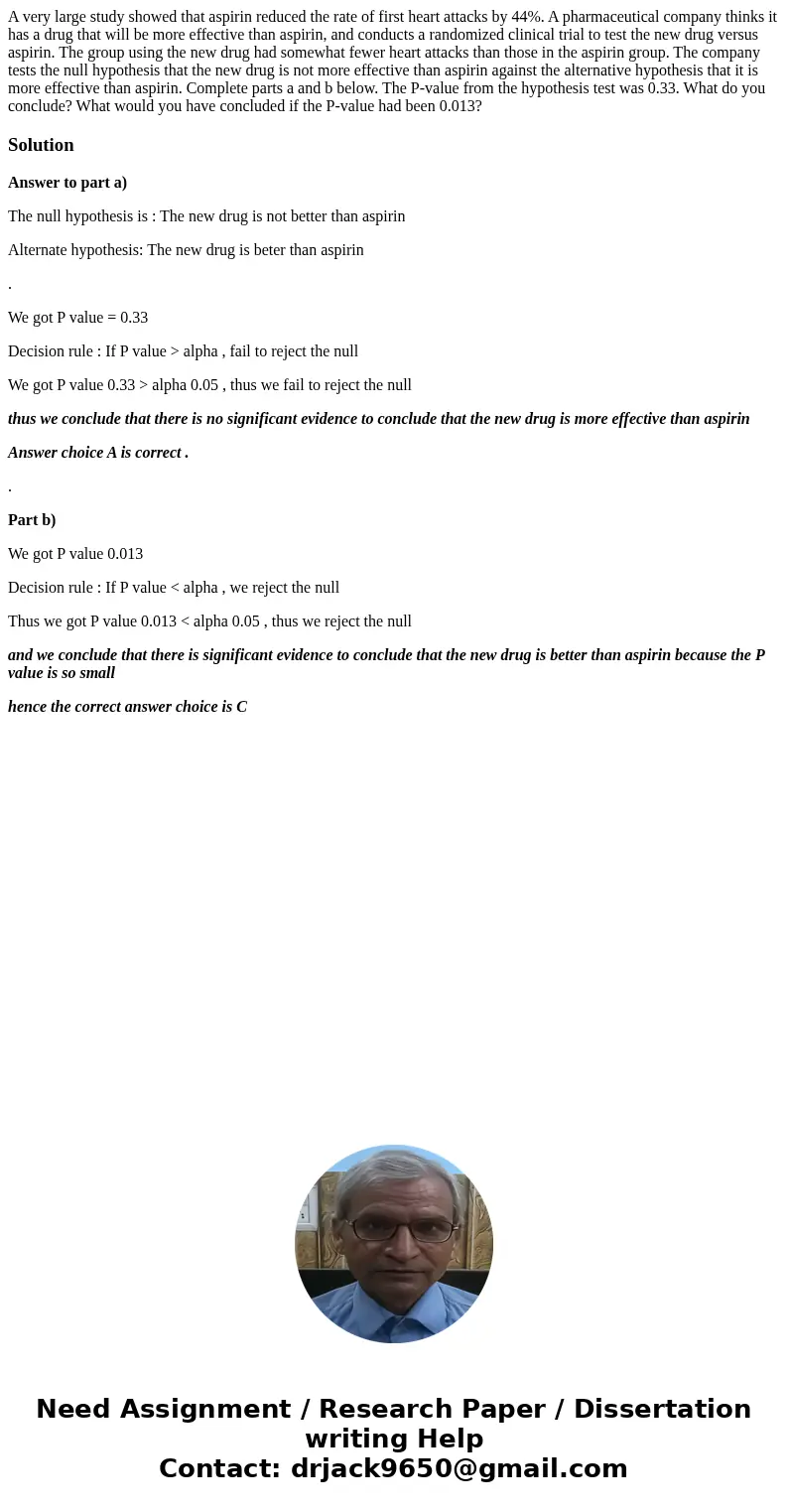A very large study showed that aspirin reduced the rate of f
A very large study showed that aspirin reduced the rate of first heart attacks by 44%. A pharmaceutical company thinks it has a drug that will be more effective than aspirin, and conducts a randomized clinical trial to test the new drug versus aspirin. The group using the new drug had somewhat fewer heart attacks than those in the aspirin group. The company tests the null hypothesis that the new drug is not more effective than aspirin against the alternative hypothesis that it is more effective than aspirin. Complete parts a and b below. The P-value from the hypothesis test was 0.33. What do you conclude? What would you have concluded if the P-value had been 0.013?
Solution
Answer to part a)
The null hypothesis is : The new drug is not better than aspirin
Alternate hypothesis: The new drug is beter than aspirin
.
We got P value = 0.33
Decision rule : If P value > alpha , fail to reject the null
We got P value 0.33 > alpha 0.05 , thus we fail to reject the null
thus we conclude that there is no significant evidence to conclude that the new drug is more effective than aspirin
Answer choice A is correct .
.
Part b)
We got P value 0.013
Decision rule : If P value < alpha , we reject the null
Thus we got P value 0.013 < alpha 0.05 , thus we reject the null
and we conclude that there is significant evidence to conclude that the new drug is better than aspirin because the P value is so small
hence the correct answer choice is C

 Homework Sourse
Homework Sourse